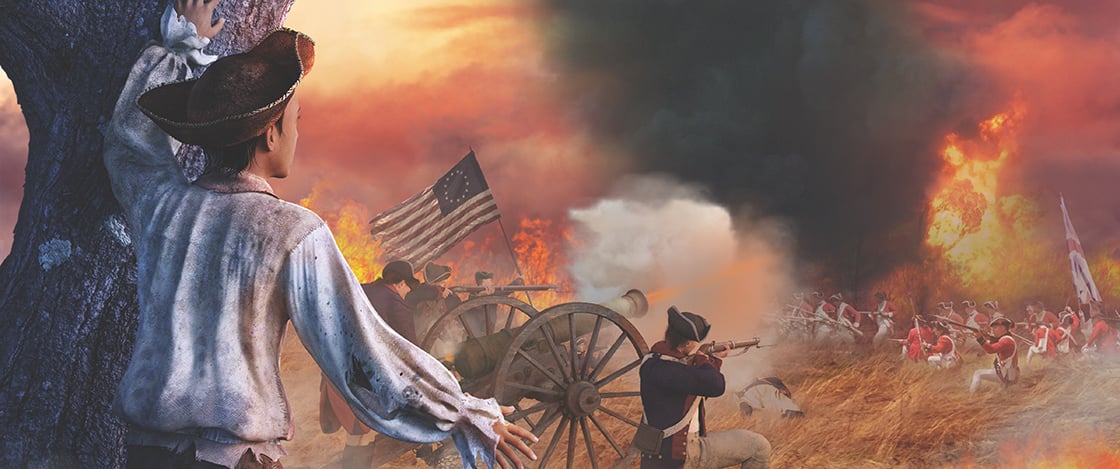In the predawn darkness, more than 15,000 British soldiers began to creep toward Brooklyn, which at that time was a sparsely populated village barely a mile across the river from New York City. Only a few thousand American troops were stationed there. Most were hunkered down in six American forts—roughly constructed buildings protected by high walls and cannons. Other troops were on patrol across the area. All would be caught by surprise.
Over the next few days, Washington scrambled to send reinforcements to Brooklyn. Among those reinforcements was Joseph, his pockets stuffed with hard biscuits and his heart filled with fear. He was rowed across the river, a trip that took about an hour.
When he stepped ashore in Brooklyn, a grisly scene greeted him: Men lay in the grass with gruesome injuries—broken arms, missing legs, gushing head wounds.
Joseph’s regiment was ordered to a nearby creek, where they fought bravely. But the British forces outmatched them in size and might. Blast by fiery cannon blast, shot by crackling musket shot, the British mowed down the Americans. Hundreds were killed, injured, or taken prisoner. Those captured were doomed to almost certain death on the prison ships docked around New York City— filthy, rat-infested floating jails where thousands died of starvation and disease throughout the war.
Many Americans threw down their weapons and attempted to flee. Joseph watched in horror as dozens of American soldiers drowned trying to escape across a deep pond. He helped drag bodies out of the water.
For three days, Joseph and his regiment fought the British troops. On the third day of fighting, the British closed in on the American forts, where thousands of soldiers—and Washington himself—were trapped. The situation was dire: If the British captured the soldiers in these forts, the war would certainly be lost and America’s fight for freedom would end on the blood-soaked fields of Brooklyn.
Yet amid the blood and smoke and terror, Washington did not give up. Instead, he devised an audacious plan.


